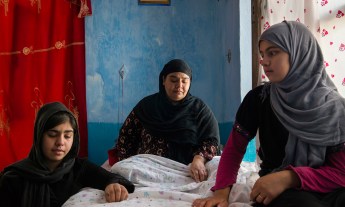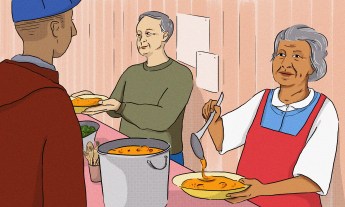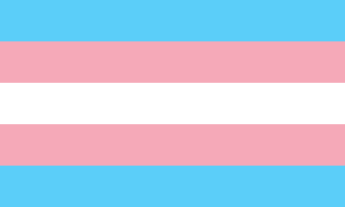
One researcher’s quest to end discrimination against single people.
Bella DePaulo, now in her sixties, has always been single. For some time, she thought the marriage bug would bite her, until she realized it wouldn’t—and she didn’t want it to. DePaulo, who describes herself as “single at heart,” relishes the lifestyle. What she doesn’t love is the prejudice that single people face, from cultural stigma to discrimination at work, in the media and elsewhere. That’s why the Harvard-trained social scientist (now a project scientist at UCSB) has spent nearly two decades researching single life in America, publishing her findings in scholarly journals, in books including Singled Out, and on blogs. She explains why the pervasive negative stereotypes about single people are largely unsubstantiated, while the anecdotal prejudice is real — and so ingrained we often hardly see it.
First, let’s define our terms: “singlism” and “matrimania.” DePaulo has coined two words that are essential to this discussion. “Singlism is the stereotyping, stigmatizing and discrimination of people who are not married,” she says. “The flip side of that is matrimania: the over-the-top celebrating and hyping of marriage and coupling and weddings. So if you’re single, you get it coming and going.”
Married men earn about 26 percent more than single men at equivalent levels.
Single people face discrimination in the workplace … DePaulo posits that single people’s non-work lives are often cast as less valid and valuable than married people’s. As a result, they’re often expected to cover while those with spouses or families leave the office early, take the leftover vacation slots or travel more on the assumption they have no need to be home. For US singles, there are also more concrete effects, like insurance benefits or Social Security benefits and pay: married men earn about 26 percent more than single men at equivalent levels.
… and are generally held in lower esteem than married counterparts. DePaulo and her colleagues created biographical sketches of people who were identical — except that half were single, while half were married. Participants judged the hypothetical singles to be less socially mature, less well adjusted, and more self-centered than their otherwise identical married counterparts. The effect was starker for hypothetical 40-year-olds — who, by cultural standards, are at a should-be-married age — but persisted for hypothetical 25-year-olds, too.
Yet, there are 107 million unmarried people over the age of 18 in the United States.“Single people are near half the population and — one of my favorite statistics — Americans spend more years of their adult lives not married than married,” DePaulo says. That means that the moralizing of marriage as an institution, and the accompanying degradation of single life, not only affects a huge proportion of the American population, but is out of touch with the country’s cultural reality.
We often don’t recognize singlism as prejudice. As part of a series of housing studies, DePaulo and her colleagues described to participants a landlord with two people interested in the available property. In each example, a person from a discriminated-against group offered to pay more than a person from a recognized majority, but the landlord chose the latter: a man over a woman who offered to pay more; a white person over a black person; a married couple over a single person. In each case, participants explained the landlord’s choice as discrimination—except in that last case. Then, “they said, ‘because the couple is married,’ like that in itself is an explanation,” DePaulo says. “They didn’t get to what was obvious in all the other instances: that it’s discrimination.”
“If the benefits of marriage were perfectly obvious to people, we wouldn’t need all this hype around it.”
Singlism and matrimania are the result of cultural insecurities. Perhaps counterintuitively, DePaulo thinks that the prejudice against single people and the hysteria about marriage are an outgrowth of our insecurities. “If the benefits of marriage were perfectly obvious to people, we wouldn’t need all this hype around it,” she says. The benefits marriage used to confer can now be attained in other ways: single women can have kids, sleep with partners without anyone batting an eye, and support themselves. To say marriage is a good choice for those who genuinely want it is one thing, but to believe that married people are unilaterally better off than single people is, DePaulo suggests, to betray a deeper ambivalence about what makes marriage a worthwhile decision.
The meme that married people are happier and healthier than single people is unfounded. DePaulo dug into the research supposedly proving the benefits of getting married and found substantial experimental flaws across the board. (Often, these studies either excluded divorced people entirely or lumped them in with single people, thereby obscuring the fact that they had gotten married — and hadn’t liked it. Another problem: Unlike with drug studies, a study of marriage can never truly isolate that variable; you can’t randomly assign people to get married or not.) The least problematic research, in DePaulo’s estimation, which follows the same people over the long term, has found that around the time of their weddings, people show a brief increase in happiness, then go right back to where they were when they were single. (If they get divorced later, they don’t even show this brief honeymoon effect.) Stigma against single parents is easily debunked, too: what’s really bad for kids is not having a single parent, but “conflict, acrimony or cold, neglectful environments.”
The bottom line is that there’s no better or worse — and no shortcut to happiness. Those who are happiest follow their desires, whether that means getting married or staying single. For DePaulo, as for many others, staying single just feels right. “If I got married, I would not become happier and healthier!” she says. “I love living single — except for all the singlism and matrimania.”
Photo by Stocksy.











